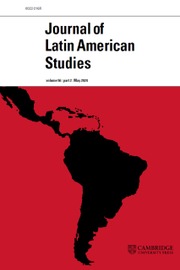Mexico in the Context of the North American Integration: Major Regional Trends and Performance of Backward Regions
Published online by Cambridge University Press: 04 June 2001
Abstract
The regional impact of the economic integration between Mexico and its northern neighbours remains virtually unexplored for Mexico. This research substantiates what had hitherto been no more than conjectures regarding the impact of NAFTA on the most laggardly Mexican regions. The southern states have been unable to share in Mexico's impressive export-growth and attraction of foreign direct investment (FDI) of the 1990s. Neither the insignificant amount of fdi received by these states nor the increase in their small export-value level can be attributed to opportunities created by NAFTA. The strong linkage between fdi and exports, and the predominance of manufacturing observed at the national level and in other northern states does not exist there. In the state of Oaxaca export growth is largely accounted for by a primary commodity whose production has no foreign investment participation. This local scenario is consistent with the interregional divergence trend observed since the start of the process of economic integration.
- Type
- Research Article
- Information
- Copyright
- © 2001 Cambridge University Press
Footnotes
- 8
- Cited by


